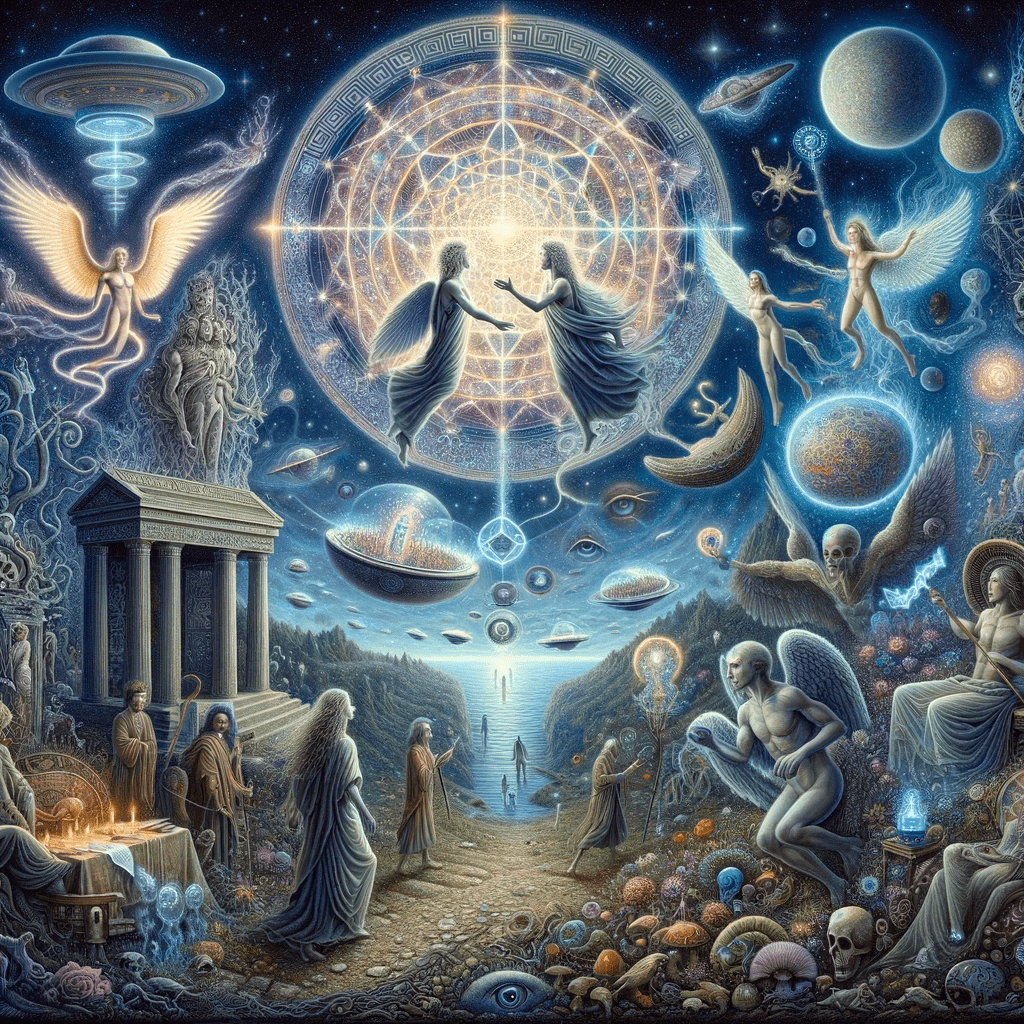Daimonic Reality: A Field Guide to the Otherworld

Daimonic Reality: A Field Guide to the Otherworld by Patrick Harpur is an in-depth exploration of the metaphysical dimensions of reality, particularly through the lens of folklore, mythology, psychology, and metaphysics. The core premise of the book is Harpur’s assertion that there exists an unseen, non-physical realm he refers to as the “daimonic reality.” This realm coexists with our ordinary, empirical world but operates according to different laws. Harpur borrows the term “daimon” from ancient Greek philosophy, where it describes entities that mediate between the divine and the human. These daimons, Harpur argues, are neither wholly material nor purely spiritual but inhabit a space between, influencing both realms.
The interactions between humans and the daimonic realm are central to Harpur’s thesis. He suggests that such interactions manifest through mystical experiences, dreams, synchronicities, visions, and encounters with supernatural or mythical creatures—including modern-day phenomena such as UFO sightings. Harpur emphasizes that these experiences are not simply delusions, hallucinations, or figments of the imagination; rather, they are genuine experiences of a different aspect of reality, which can only be accessed through non-rational means. This is where the role of imagination becomes critical in Harpur’s argument. He posits that the daimonic realm cannot be accessed or understood through traditional scientific methods, which rely on empirical observation and measurement. Instead, the daimonic is experienced through the symbolic and creative faculties of the imagination, which allow us to interact with and interpret this otherworldly dimension.
One of the more profound themes in the book is the paradoxical and elusive nature of the daimonic. Harpur describes this realm as inherently fluid, resisting rigid classification or categorization. The daimons themselves are often portrayed as shape-shifters or tricksters, embodying the unpredictable and ambiguous nature of the daimonic reality. Harpur draws connections between these daimons and similar figures found in various cultural mythologies, suggesting that this archetype of the trickster exists in many forms across different traditions. He underscores the difficulty in fully understanding or explaining the daimonic, as its nature is to evade strict definition and remain in a state of dynamic flux.
In terms of psychological interpretation, Harpur’s approach is nuanced. While he acknowledges that encounters with the daimonic can be understood as expressions of the subconscious mind—drawing on Jungian archetypes and the collective unconscious—he warns against reducing these experiences to mere psychological phenomena. Harpur advocates for what he calls a “soul-centered” approach, which recognizes that these encounters are meaningful interactions with a deeper, non-ordinary layer of reality. He insists that the daimonic must be treated as a legitimate aspect of human experience, rather than dismissed as an illusion or a purely internal mental process.
Throughout Daimonic Reality, Harpur references influential thinkers from psychology, philosophy, and mythology to support his ideas. Figures such as Carl Jung, William James, and Joseph Campbell feature prominently in his discussions, particularly in relation to the exploration of archetypes, religious experiences, and the symbolic language of myths. However, Harpur’s analysis is firmly rooted in his own metaphysical framework, and while he acknowledges the contributions of these scholars, his focus remains on how their ideas intersect with his concept of the daimonic reality.
What makes Harpur’s work stand out is his refusal to confine his exploration of the supernatural to a single discipline or mode of thought. Instead, he weaves together insights from a wide range of fields, including mythology, folklore, and philosophy, to create a holistic and multi-dimensional understanding of the daimonic. While some of his arguments might be seen as speculative, Harpur’s ability to connect disparate ideas and present a coherent view of reality that straddles both the empirical and the metaphysical is impressive. His work does not aim to provide definitive answers but rather invites readers to engage with the mysteries of existence and consider the possibility that there is more to reality than meets the eye.
Daimonic Reality challenges the materialistic worldview that dominates modern thought and encourages readers to embrace a broader, more inclusive understanding of the supernatural. Harpur’s writing is a call to recognize the profound and mysterious dimensions of human consciousness and to explore the daimonic realm not with skepticism but with curiosity and imagination. His book offers a field guide of sorts for those willing to engage with the deeper, symbolic layers of reality and seek out the connections between the visible and the invisible worlds. By doing so, Harpur suggests that we can enrich our understanding of both ourselves and the universe we inhabit.


